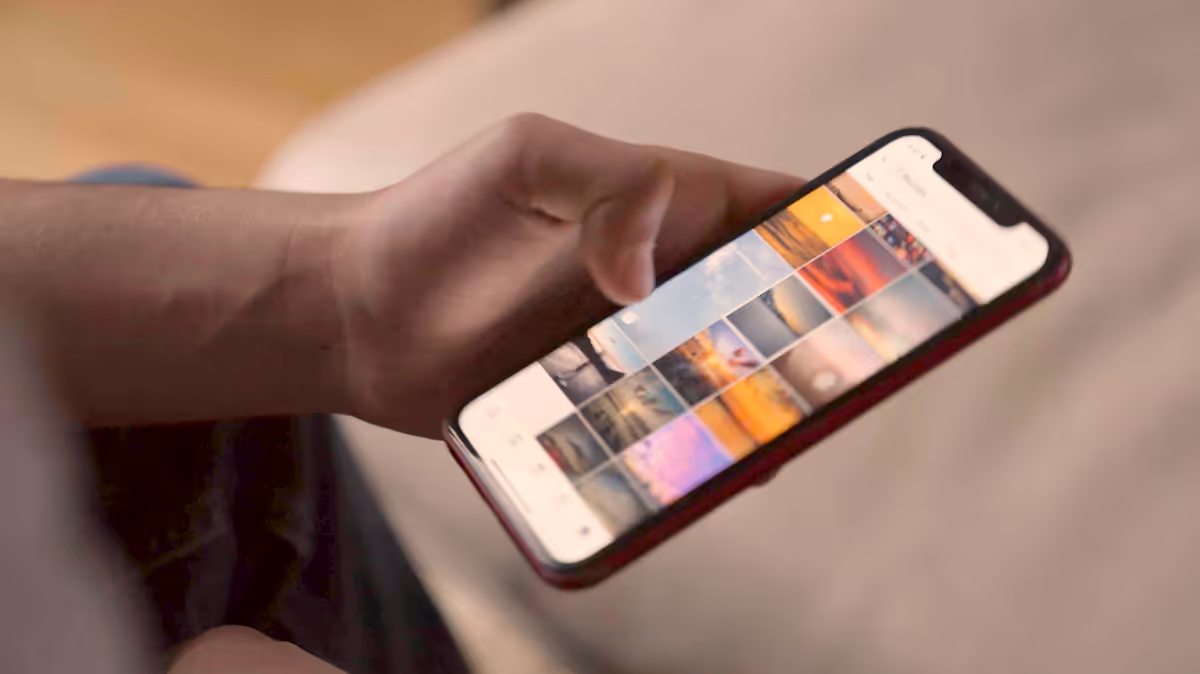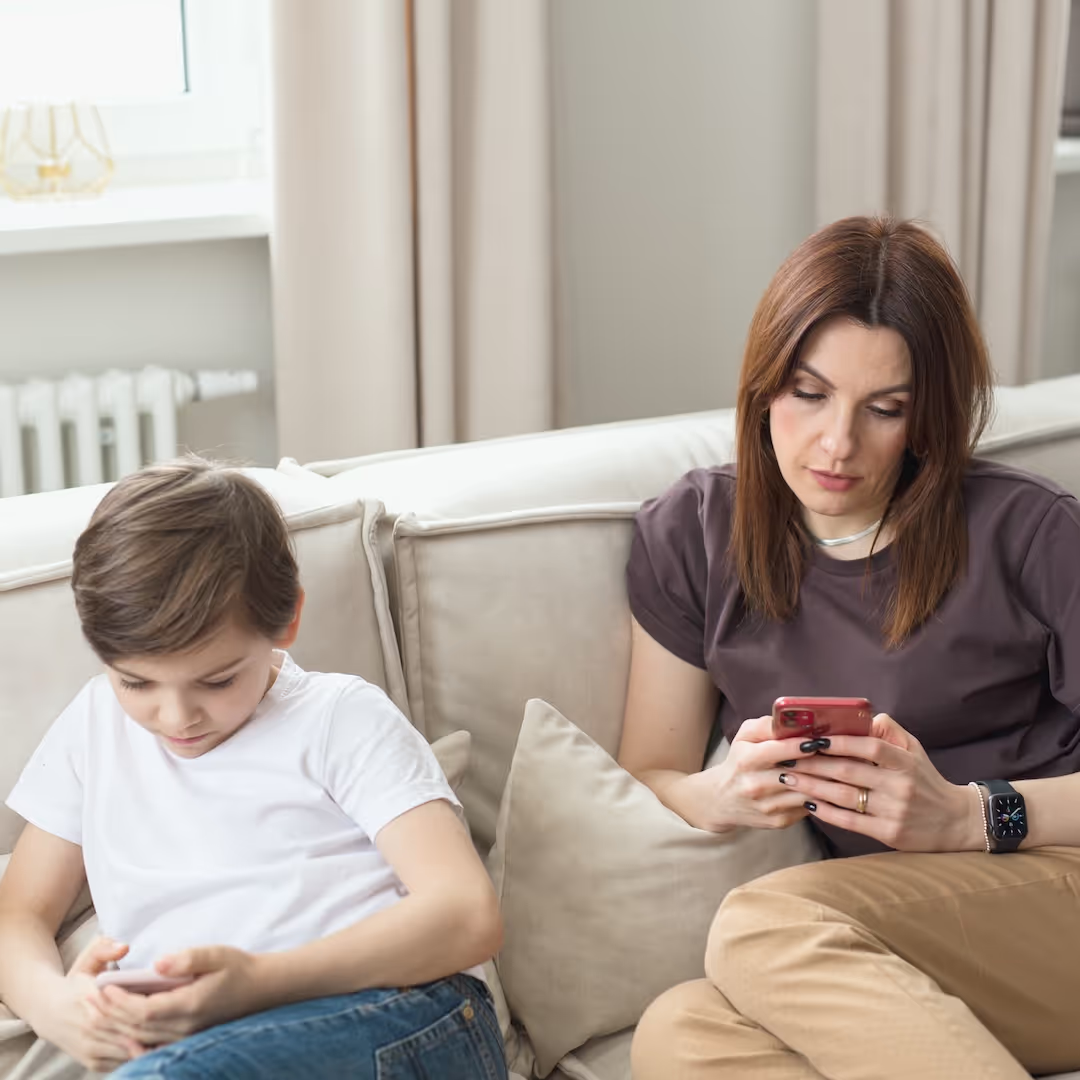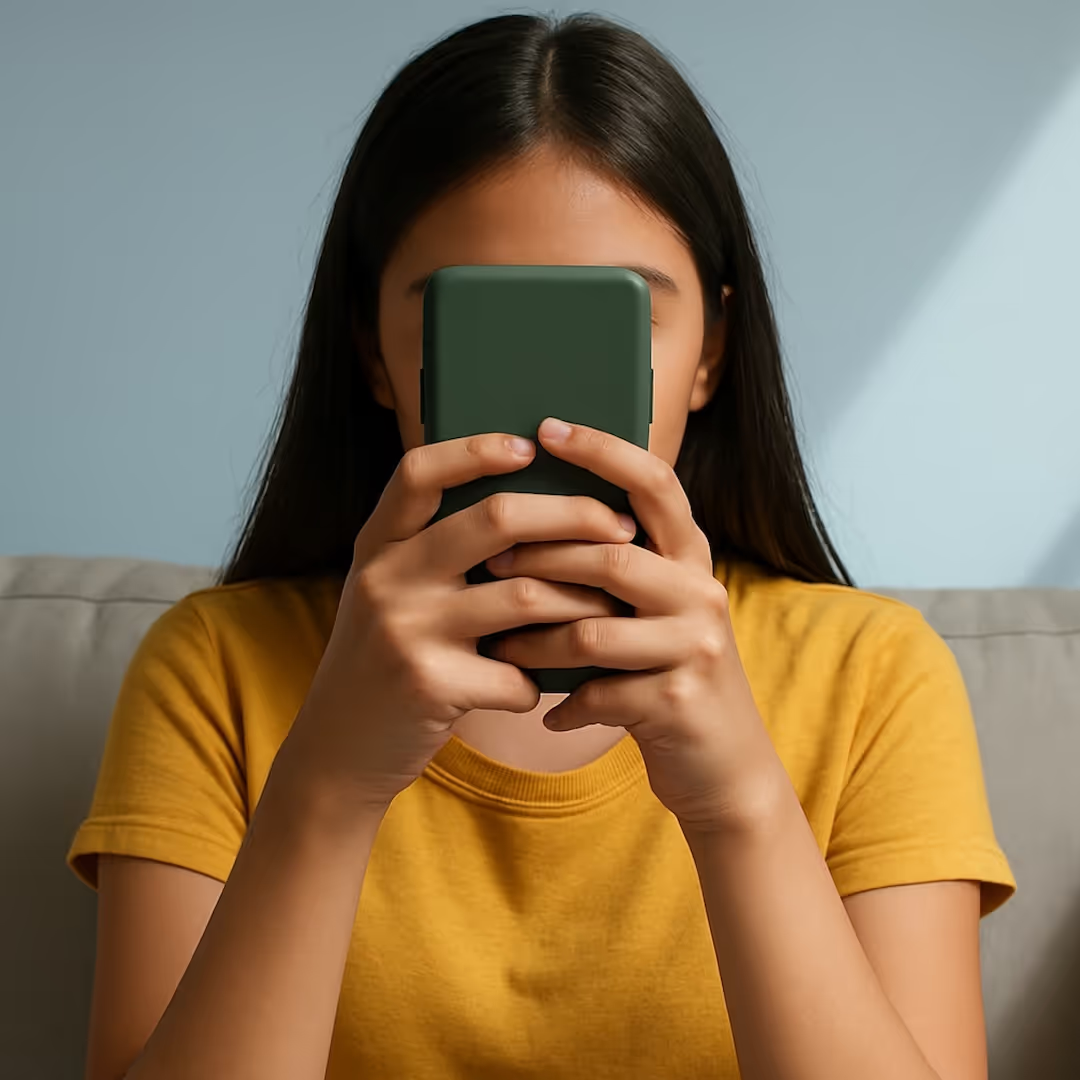


The current surge in conversation and scrutiny concerning the impact of screen time on youth mental wellbeing, catalyzed by social psychologist Jonathan Haidt's media tour for his new book, "Anxious Generation," is truly fantastic. This increased dialogue is crucial for understanding screen time risks and determining the best ways to support our children's mental health.
Let’s not let this attention for the need for solutions die down! I weigh in on four key points Haidt makes today to keep the momentum in full swing.
In a recent New York Times article, Haidt talks about a metaphor about an elephant driven by a person, and the elephant represents emotions. The rider thinks he is in control, but so often, elephants will actually steer us. Then he says, “Almost every social thing I’ve ever tried to do, we had to speak to the elephant, change people’s minds, change their hearts. “This is the first time I haven’t had to do that. Almost everybody’s elephant is already leaning my way.”
Just this week, my friend, who has a 4- and 7-year-old, told me: “All my friends have been talking for quite a while now about how damaging social media can be, and we need to wait way longer to give smartphones to our kids than what has been happening.” I was thrilled that my friend told me that. She even went on to say, I’m also hearing my friends say we should keep all devices out of the bedroom all the time.”
Last month, a study involving over 1,000 US adults was released. The researchers found that 55% of Americans favor banning children under 16 from using social media platforms, and this went up to 65% among those with children under 18 years old at home.
The data is clear: Academics improve when phones are out of school, and there are many social and emotional benefits, as well. As many of you know, in 2017, we launched a campaign called Away For The Day to help make this happen. I am honored that ParentMap, a well-respected parenting publication in Seattle, called me a “Superhero” for the work my team and I have done with the Away For The Day campaign.
I’m thrilled that Haidt is raising more awareness about the need for this change in schools. He makes the point that, as I have, several countries have started to ban phones in their schools. In fact, in January, the Netherlands just implemented a cellphone ban in schools countrywide. What a gift to those students and teachers. From our research and others, we know that the majority of parents favor keeping phones out of schools.
Just the other day, I was reviewing my interview with Simon Sinek that I did for Screenagers, and I came across this quote from him,
“Schools, like any company, any organization, create the environment, and people will respond to the environment they're in. So, if you wouldn't have access to social media throughout the day, if you weren't allowed to bring cell phones anywhere, or if you weren't even allowed to have them in the cafeteria, guess what people will do? They'll talk. They'll engage. They'll talk to the people across the table as opposed to the people who aren't in the room. These are good things.”
My film partner Lisa talked to a middle school principal a few weeks ago who said that when she banned cellphones all day at her school, a fun arm-wrestling craze started, lasting throughout the school year. Kids started interacting and playing again.
Learn more about showing our movies in your school or community!
Join Screenagers filmmaker Delaney Ruston MD for our latest Podcast

Learn more about our Screen-Free Sleep campaign at the website!
Our movie made for parents and educators of younger kids
Learn more about showing our movies in your school or community!
Allowing youth and tweens to text their parents and others is great, but giving them access to social media is much more complex and risky.
Haidt is known for proposing bold solutions. One of his current bold ideas is that teens should only be allowed to get social media once they are 16.
He addresses the number one pushback: If many kids younger than this age are using social media and other teens are not, they will feel isolated, which is not good. He proposes, as we and organizations like Wait Til Eight have, that once we get other parents to do this — think of whole schools advocating for it — then youth will no longer be left out.
While it is difficult to believe this age delay will happen anytime soon, having this discussion is wonderful. It could help parents of children and tweens think about reaching out to other parents and working together to delay their kids' social media use.
On last week's Screenagers Podcast, psychologist and author Lisa Damour discussed the fact that perspective-taking and critical thinking are much greater generally after around age 14 than before. Having more capacities in these areas is a major upside for youth, given all they are exposed to (think disinformation, etc.) and all they experience on social media.
I cannot agree more with this point — plain and simple. I wholeheartedly agree with Haidt’s message that it is crucial to give our youth the message that the world is not out to get them.
Haidt has an organization called Let Grow. The homepage says,
“Let Grow believes today’s kids are smarter and stronger than our culture gives them credit for. We are making it easy, normal and legal to give kids the independence they need to grow into capable, confident, and happy adults. When we let go we… Let Grow.”
Haidt often says, “We have overprotected our children in the real world and underprotected them online.”
Learn more about showing our movies in your school or community!
Join Screenagers filmmaker Delaney Ruston MD for our latest Podcast

Learn more about our Screen-Free Sleep campaign at the website!
Our movie made for parents and educators of younger kids
Join Screenagers filmmaker Delaney Ruston MD for our latest Podcast
With new videos posted every Tuesday and Friday, be sure to subscribe to our YouTube Channel! Here's our latest videos!
As we’re about to celebrate 10 years of Screenagers, we want to hear what’s been most helpful and what you’d like to see next.
Please click here to share your thoughts with us in our community survey. It only takes 5–10 minutes, and everyone who completes it will be entered to win one of five $50 Amazon vouchers.
The current surge in conversation and scrutiny concerning the impact of screen time on youth mental wellbeing, catalyzed by social psychologist Jonathan Haidt's media tour for his new book, "Anxious Generation," is truly fantastic. This increased dialogue is crucial for understanding screen time risks and determining the best ways to support our children's mental health.
Let’s not let this attention for the need for solutions die down! I weigh in on four key points Haidt makes today to keep the momentum in full swing.
In a recent New York Times article, Haidt talks about a metaphor about an elephant driven by a person, and the elephant represents emotions. The rider thinks he is in control, but so often, elephants will actually steer us. Then he says, “Almost every social thing I’ve ever tried to do, we had to speak to the elephant, change people’s minds, change their hearts. “This is the first time I haven’t had to do that. Almost everybody’s elephant is already leaning my way.”
Just this week, my friend, who has a 4- and 7-year-old, told me: “All my friends have been talking for quite a while now about how damaging social media can be, and we need to wait way longer to give smartphones to our kids than what has been happening.” I was thrilled that my friend told me that. She even went on to say, I’m also hearing my friends say we should keep all devices out of the bedroom all the time.”
Last month, a study involving over 1,000 US adults was released. The researchers found that 55% of Americans favor banning children under 16 from using social media platforms, and this went up to 65% among those with children under 18 years old at home.
The data is clear: Academics improve when phones are out of school, and there are many social and emotional benefits, as well. As many of you know, in 2017, we launched a campaign called Away For The Day to help make this happen. I am honored that ParentMap, a well-respected parenting publication in Seattle, called me a “Superhero” for the work my team and I have done with the Away For The Day campaign.
I’m thrilled that Haidt is raising more awareness about the need for this change in schools. He makes the point that, as I have, several countries have started to ban phones in their schools. In fact, in January, the Netherlands just implemented a cellphone ban in schools countrywide. What a gift to those students and teachers. From our research and others, we know that the majority of parents favor keeping phones out of schools.
Just the other day, I was reviewing my interview with Simon Sinek that I did for Screenagers, and I came across this quote from him,
“Schools, like any company, any organization, create the environment, and people will respond to the environment they're in. So, if you wouldn't have access to social media throughout the day, if you weren't allowed to bring cell phones anywhere, or if you weren't even allowed to have them in the cafeteria, guess what people will do? They'll talk. They'll engage. They'll talk to the people across the table as opposed to the people who aren't in the room. These are good things.”
My film partner Lisa talked to a middle school principal a few weeks ago who said that when she banned cellphones all day at her school, a fun arm-wrestling craze started, lasting throughout the school year. Kids started interacting and playing again.
Allowing youth and tweens to text their parents and others is great, but giving them access to social media is much more complex and risky.
Haidt is known for proposing bold solutions. One of his current bold ideas is that teens should only be allowed to get social media once they are 16.
He addresses the number one pushback: If many kids younger than this age are using social media and other teens are not, they will feel isolated, which is not good. He proposes, as we and organizations like Wait Til Eight have, that once we get other parents to do this — think of whole schools advocating for it — then youth will no longer be left out.
While it is difficult to believe this age delay will happen anytime soon, having this discussion is wonderful. It could help parents of children and tweens think about reaching out to other parents and working together to delay their kids' social media use.
On last week's Screenagers Podcast, psychologist and author Lisa Damour discussed the fact that perspective-taking and critical thinking are much greater generally after around age 14 than before. Having more capacities in these areas is a major upside for youth, given all they are exposed to (think disinformation, etc.) and all they experience on social media.
I cannot agree more with this point — plain and simple. I wholeheartedly agree with Haidt’s message that it is crucial to give our youth the message that the world is not out to get them.
Haidt has an organization called Let Grow. The homepage says,
“Let Grow believes today’s kids are smarter and stronger than our culture gives them credit for. We are making it easy, normal and legal to give kids the independence they need to grow into capable, confident, and happy adults. When we let go we… Let Grow.”
Haidt often says, “We have overprotected our children in the real world and underprotected them online.”
With new videos posted every Tuesday and Friday, be sure to subscribe to our YouTube Channel! Here's our latest videos!
Sign up here to receive the weekly Tech Talk Tuesdays newsletter from Screenagers filmmaker Delaney Ruston MD.
We respect your privacy.
The current surge in conversation and scrutiny concerning the impact of screen time on youth mental wellbeing, catalyzed by social psychologist Jonathan Haidt's media tour for his new book, "Anxious Generation," is truly fantastic. This increased dialogue is crucial for understanding screen time risks and determining the best ways to support our children's mental health.
Let’s not let this attention for the need for solutions die down! I weigh in on four key points Haidt makes today to keep the momentum in full swing.
In a recent New York Times article, Haidt talks about a metaphor about an elephant driven by a person, and the elephant represents emotions. The rider thinks he is in control, but so often, elephants will actually steer us. Then he says, “Almost every social thing I’ve ever tried to do, we had to speak to the elephant, change people’s minds, change their hearts. “This is the first time I haven’t had to do that. Almost everybody’s elephant is already leaning my way.”
Just this week, my friend, who has a 4- and 7-year-old, told me: “All my friends have been talking for quite a while now about how damaging social media can be, and we need to wait way longer to give smartphones to our kids than what has been happening.” I was thrilled that my friend told me that. She even went on to say, I’m also hearing my friends say we should keep all devices out of the bedroom all the time.”
Last month, a study involving over 1,000 US adults was released. The researchers found that 55% of Americans favor banning children under 16 from using social media platforms, and this went up to 65% among those with children under 18 years old at home.
The data is clear: Academics improve when phones are out of school, and there are many social and emotional benefits, as well. As many of you know, in 2017, we launched a campaign called Away For The Day to help make this happen. I am honored that ParentMap, a well-respected parenting publication in Seattle, called me a “Superhero” for the work my team and I have done with the Away For The Day campaign.
I’m thrilled that Haidt is raising more awareness about the need for this change in schools. He makes the point that, as I have, several countries have started to ban phones in their schools. In fact, in January, the Netherlands just implemented a cellphone ban in schools countrywide. What a gift to those students and teachers. From our research and others, we know that the majority of parents favor keeping phones out of schools.
Just the other day, I was reviewing my interview with Simon Sinek that I did for Screenagers, and I came across this quote from him,
“Schools, like any company, any organization, create the environment, and people will respond to the environment they're in. So, if you wouldn't have access to social media throughout the day, if you weren't allowed to bring cell phones anywhere, or if you weren't even allowed to have them in the cafeteria, guess what people will do? They'll talk. They'll engage. They'll talk to the people across the table as opposed to the people who aren't in the room. These are good things.”
My film partner Lisa talked to a middle school principal a few weeks ago who said that when she banned cellphones all day at her school, a fun arm-wrestling craze started, lasting throughout the school year. Kids started interacting and playing again.

It feels like we’re finally hitting a tipping point. The harms from social media in young people’s lives have been building for far too long, and bold solutions can’t wait any longer. That’s why what just happened in Australia is extremely exciting. Their new nationwide move marks one of the biggest attempts yet to protect kids online. And as we released a new podcast episode yesterday featuring a mother who lost her 14-year-old son after a tragic connection made through social media, I couldn’t help but think: this is exactly the kind of real-world action families have been desperate for. In today’s blog, I share five key things to understand about what Australia is doing because it’s big, it’s controversial, and it might just spark global change.
READ MORE >
I hear from so many parents who feel conflicted about their own phone habits when it comes to modeling healthy use for their kids. They’ll say, “I tell my kids to get off their screens, but then I’m on mine all the time.” Today I introduce two moms who are taking on my One Small Change Challenge and share how you can try it too.
READ MORE >
This week’s blog explores how influencers and social media promoting so-called “Healthy” ideals — from food rules to fitness fads — can quietly lead young people toward disordered eating. Featuring insights from Dr. Jennifer Gaudiani, a leading expert on eating disorders, we unpack how to spot harmful messages and start honest conversations with kids about wellness, body image, and what “healthy” really means.
READ MORE >for more like this, DR. DELANEY RUSTON'S NEW BOOK, PARENTING IN THE SCREEN AGE, IS THE DEFINITIVE GUIDE FOR TODAY’S PARENTS. WITH INSIGHTS ON SCREEN TIME FROM RESEARCHERS, INPUT FROM KIDS & TEENS, THIS BOOK IS PACKED WITH SOLUTIONS FOR HOW TO START AND SUSTAIN PRODUCTIVE FAMILY TALKS ABOUT TECHNOLOGY AND IT’S IMPACT ON OUR MENTAL WELLBEING.
